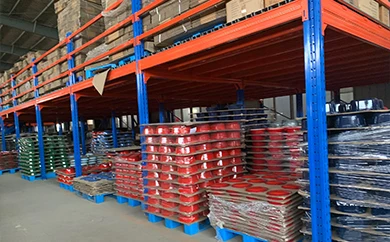
what material are woks made of
What Material Are Woks Made Of?
Woks are an essential tool in many Asian kitchens and have gained popularity worldwide for their versatility and efficiency in cooking. Their unique design allows for high-heat cooking, which is a hallmark of many Asian culinary techniques. However, a question that often arises among home cooks and culinary enthusiasts alike is what material are woks made of? Understanding the materials used in woks is crucial, as it affects not only the cooking process but also the flavor of the food and the care required to maintain these beloved kitchen tools.
Traditional Materials
Traditionally, woks are made from two main materials carbon steel and cast iron
. Each material has its unique characteristics, advantages, and disadvantages.1. Carbon Steel Carbon steel is the most common material for woks and is favored by many professional chefs. This material is known for its excellent heat conductivity and responsiveness to temperature changes, making it perfect for stir-frying. A carbon steel wok typically requires seasoning before use, which involves applying a layer of oil and heating it to create a non-stick surface. Once properly seasoned, a carbon steel wok can develop a natural non-stick quality that enhances the flavor of the dishes cooked in it. Additionally, carbon steel woks are relatively lightweight, allowing for easy tossing and stirring of ingredients.
2. Cast Iron Cast iron woks are another traditional option, prized for their heat retention and even cooking. Unlike carbon steel, cast iron woks retain heat very well, which can be advantageous for certain cooking styles, such as deep frying or slow cooking. However, they tend to be heavier and require a longer time to heat up. Similar to carbon steel woks, cast iron woks also need to be seasoned to build a non-stick surface and prevent rusting. One drawback of cast iron is that it may react with acidic foods, which can affect the flavor of dishes like tomato-based stir-fries.
Modern Materials
what material are woks made of

While carbon steel and cast iron are traditional materials, modern woks are also made from other materials designed to cater to diverse preferences and cooking styles.
1. Stainless Steel Stainless steel woks provide a sleek, modern look and are known for their durability and resistance to rust and staining. They don't require seasoning, making them low maintenance compared to carbon steel and cast iron. However, stainless steel woks do not conduct heat as well as carbon steel or cast iron, which can lead to uneven cooking in certain cases. Many stainless steel woks come with a copper or aluminum core to improve heat conductivity, making them a suitable option for various cooking techniques.
2. Non-Stick Coatings Non-stick woks are coated with materials like Teflon or ceramic to provide an easy-release cooking surface. These modern woks excel at preventing food from sticking, which can make cooking and cleaning up easier. However, they also have limitations, as high heat can damage the non-stick coating, and they may not develop the same depth of flavor as a well-seasoned carbon steel or cast iron wok. Additionally, non-stick coatings can wear off over time, necessitating replacement.
3. Electric Woks With the rise of technology in the kitchen, electric woks have entered the market. These woks come with built-in heating elements and adjustable temperature settings, allowing for greater control over cooking. Electric woks can be made from various materials, including stainless steel or aluminum, and are often lighter and easier to use for beginners. However, they may not replace the traditional wok experience for those who prefer the authentic flavors developed through high-heat cooking on the stovetop.
Choosing the Right Wok
When selecting a wok, consider your cooking style and preferences. If you want a versatile, high-heat cooking tool for stir-frying, a carbon steel wok is an excellent choice. For those who prefer low-maintenance options, a stainless steel or non-stick wok may be more appealing. Ultimately, the material you choose will influence your cooking experience and the flavors of the dishes you prepare.
In conclusion, the material used to make a wok significantly impacts its performance and usability. From traditional options like carbon steel and cast iron to modern alternatives such as stainless steel and electric woks, each material brings unique qualities to the kitchen. Whether you’re an experienced chef or a home cook, understanding these materials can help you make an informed decision and enhance your culinary adventures. Whatever your choice, the wok remains a celebrated vessel for cooking, bringing flavor and texture to meals worldwide.
-
Season Cast Iron Perfectly with GPT-4 Turbo TipsNewsAug.01,2025
-
High Quality Cast Iron Cookware - Baixiang County Zhongda MachineryNewsAug.01,2025
-
Premium Cast Iron Pan: Durable & Perfect HeatNewsAug.01,2025
-
High Quality Kitchen Durable Black Round Cast Iron Cookware Pancake Crepe Pan-Baixiang County Zhongda Machinery Manufacturing Co., Ltd.NewsAug.01,2025
-
Cast Iron Cookware - Baixiang County Zhongda Machinery | Nonstick, Heat ResistanceNewsAug.01,2025
-
High Quality Kitchen Durable Black Round Cast Iron Cookware - Baixiang County Zhongda Machinery | Non-Stick, Heat Retention, DurableNewsJul.31,2025


